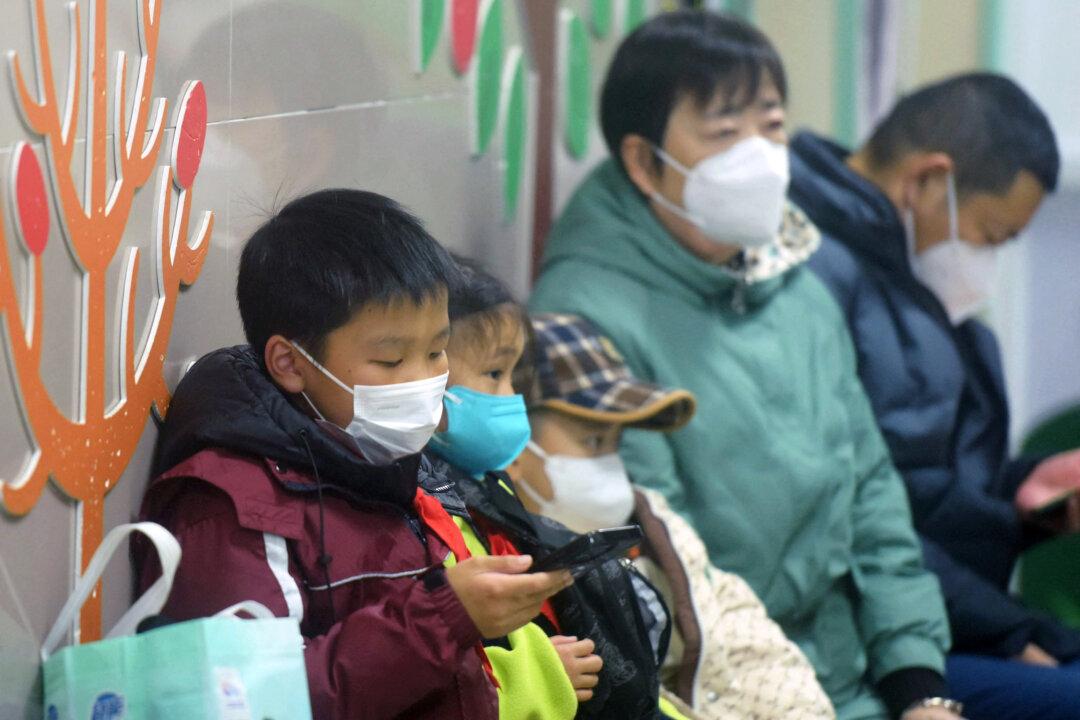An official internal notice by China’s National Center for Disease Control and Prevention (China CDC) issued in March and obtained by The Epoch Times is warning of increased human contagion risk with a new mutant strain of H5N1 highly pathogenic avian influenza.
The internal document, titled “National Center for Disease Control and Prevention reports on the dynamics of H5N1 variants and analysis of response measures taken by primary and secondary schools in Beijing and Shanghai,” stated that “as of 6:36 a.m. on March 13, 2025, the H5N1 variant (tentatively named A/H5N1-2025E) has a new mutation in the hemagglutinin (HA) protein gene.”
“Animal experiments have shown that its ability to bind to mammalian cells has increased, and the risk of human-to-human transmission has increased from low to medium,” the leaked document read.
The China CDC notice also revealed that as of March 12, a total of 127 samples nationwide tested positive for the mutant strain, “of which 68 percent were samples from live poultry market environments, and 25 percent were asymptomatic carriers among poultry workers.”
The notice identified that “sporadic cases were concentrated in the densely populated breeding areas of the Yangtze River Delta and the Pearl River Delta.”
Meanwhile, epidemic prevention departments in Beijing and other places have set up avian influenza testing points or launched all-around avian influenza monitoring.
The notice identified “first-level prevention and control targets” as those with direct contact with live poultry, people with weakened immunity, and patients with chronic respiratory diseases.
It wasn’t until early March that the Chinese regime admitted that “sporadic” cases of human avian influenza infections had been occurring in China at a “relatively low level.” It didn’t specify the virus strains or the areas where they occurred.
The internal notice shows that China’s problem of avian influenza has become very serious, although ruling Chinese Communist Party (CCP) officials are still concealing it, Sean Lin, assistant professor in the Biomedical Science Department at Feitian College in New York and former U.S. army microbiologist, told The Epoch Times on April 5.
“A mutant strain has appeared, but the officials did not say exactly what the mutation is,” he said. “The name of the so-called A/H5N1-2025E virus strain does not correspond to the specific mutated amino acid position. The total amino acid length of the H5N1 HA hemagglutinin protein is around 524 amino acids, so what does this 2025E correspond to?” he asked about the mutation.
“This internal notice from the China CDC is still covering up the truth,” he said, especially if they are recommending increased attention for this variant over an increased transmissibility.
Dr. Mei-Shang Ho, a research fellow at Academia Sinica in Taiwan, noted that before a virus is able to jump from human-to-human, it goes through a stage called “limited human-to-human transmission.”
“Limited means that it is not very effective yet,” she told The Epoch Times on April 6. “It may be transmitted among very close contacts because family members have the same genes.
“This H5N1 needs to be directly monitored now, and China needs to announce the updates to the public,” she warned. “Once it spreads among humans, the consequences will be disastrous.”
The historic mortality rate of H5N1 in humans reported by the World Health Organization is around 50 percent. However, experts consider this an overestimate of true mortality as mild or asymptomatic cases often go undiagnosed and unreported.
“The advantage of the United States is that it has been tracking it all the time, and when it tracks one case, it tells the public the case. This is the difference [between the United States and communist China],” Ho said. She added that existing antiviral drugs and anti-influenza virus drugs are still being used as effective treatments.
China’s Yangtze River Delta and Pearl River Delta, where the cases included in the internal notice have been concentrated, are China’s commercial, industrial, and agricultural production centers.
Outbreak Measures at Schools
In the leaked document, the China CDC also outlined bird flu response measures for primary and secondary schools in Beijing and Shanghai, in preparation for the event of an H5N1 outbreak among humans.It said that all primary and secondary schools in five administrative districts of Beijing, including Chaoyang and Haidian, would switch to online teaching, while other districts could adopt a mixed policy.
In Shanghai’s Pudong New Area and Minhang District, the Municipal Education Bureau will simultaneously open the online classroom resource library, covering all K–12 courses, the notice said. It mentioned that “the three major cellphone carriers promise to provide free traffic for educational apps during the outbreak.”

Lin said that the notice from the China CDC confirmed his previous assessment. “Some schools in China suddenly gave students spring break, which was not a normal school holiday,” he said.
Lin believes these actions were an undisclosed epidemic control measure. “The disease control department hopes to control the epidemic and evacuate students from the school,” he said.
But by not being transparent with parents and students about the catalyst for the break, the CCP is risking potential H5N1 infections in the uninformed and unprotected community.
Other Prevention Measures
Health authorities across China have also been taking measures to increase monitoring of human bird flu infections.Media in China reported on March 21 that the regional CDC in Beijing’s Miyun District launched an avian influenza serological surveillance survey on March 10 and set up 10 monitoring points in various areas, including Xitiangezhuang, Shilibao, Taishitun, Xinchengzi, Shicheng, Xiwengzhuang, Dongshaoqu, Dachengzi, Mujiayu, and Gubeikou.
It told the public that the purpose of the testing was “to grasp the status of avian influenza virus infection in the human population, effectively prevent the spread of the epidemic, and ensure regional public health safety.”
However, virus researchers in mainland China have confirmed to The Epoch Times that there have been known cases of human H5N1 infections in Miyun, Beijing, and that the public remains uninformed.

Mainland Chinese media also reported on a launch ceremony for the construction of a comprehensive avian influenza monitoring base in Laizhou, Yantai city of Shandong Province, on March 14. The monitoring base will service high-risk areas, such as the Laizhou farms and live poultry trading markets.
The Chinese regime’s official projects bidding website posted on April 3 a project in the megacity of Tianjin near Beijing named “Tianjin Institute of Medical Science and Technology Information 2025 Influenza, Human Avian Influenza, and SARS Prevention and Control Project (Health Emergency Publicity Direction)—Competitive Consultation Announcement.” The details of the project are only available to approved VIP members who can bid for government contracts on the website.
“China is now taking such unusual early warning and prevention measures for human infections of avian influenza, while at the same time not telling the public the real reason. This is a serious warning to the international community,” Lin said of the Chinese regime’s recent moves.
Lin called for the U.S. government “to immediately put pressure on the Chinese regime and demand it clearly disclose the situation of avian influenza infecting humans and pigs, and the threat it poses.”
“In addition, the United States needs to begin arranging customs screening for people with respiratory symptoms entering from mainland China.”
He believes the U.S. CDC can no longer just follow its usual process in responding to this crisis, given the lack of transparency from China. “The U.S. government should seriously collect intelligence, re-analyze, and make corresponding adjustments and decisions,” he recommended.





